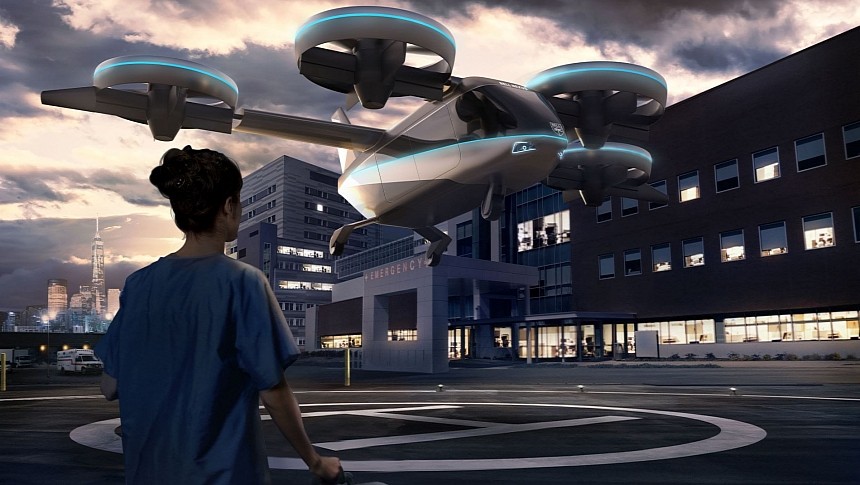Good news from Textron eAviation – the versatile and futuristic-looking electric air taxi known as Nexus is on the right track. The aviation giant's AAM (advanced air mobility) project recently hit a milestone by kicking off complex wind tunnel testing for its first-ever eVTOL (electric vertical take-off and landing).
When it comes to eVTOLs, we mostly hear about bold startups determined to change the future of air mobility with a new generation of emission-free, efficient aircraft. However, this doesn't mean that major aviation players are staying behind, on the contrary. Most of them are actively supporting AAM either indirectly or by developing their own eVTOL designs.
Textron is dabbling into the world of AAM through a dedicated subsidiary, Textron eAviation. Based in Wichita, Kansas, this recently-established company brings together Pipistrel, the Slovenian light sport aircraft manufacturer that Textron acquired last year, and the Nexus program, representing its eVTOL division.
Aviation giants like Textron obviously have a great advantage when tackling the AAM challenge due to their extensive and diverse expertise. Back in 2019, Textron's helicopter division Bell was one of the first to present an electric air taxi concept. It was initially designed as a six-duct air vehicle that made waves at CES 2019 and that gradually evolved into a four-duct version.
Bell's concept focused more on the idea of increased efficiency and saving time, reflected by the catchy slogan of turning a 45-minute drive into a 10-minute flight. The Nexus concept was also designed with versatility in mind – it could operate in full battery-electric mode or be configured as a hybrid-electric vehicle for a greater range.
In 2021, folks got to admire the Nexus 4EX Air Taxi for the first time. Bell displayed it in the new Smithsonian Arts and Industries building as part of the FUTURES exhibition.
This year, the Nexus project hit another milestone. The manufacturer is using a 23% scale model to kick off wind tunnel testing. One of the main goals will be to check the rotors' efficiency by testing them at all power levels and conversion angles. The feedback will also be used to improve things related to tail size, aerodynamic drag, and engine power requirements. The ultimate goal is to get the Nexus aircraft to certification standards.
Textron tweaked and improved the Nexus concept over these past years. The current version is larger than most air taxis, boasting a 50-foot (15.2 meters) wingspan and heavier weight of 8,000 lbs (3,630 kg). Performance-wise, the range was increased from 60 to 100 nautical miles (185 km), coupled with a top speed of 120 knots (138 mph/22 kph). The Nexus eVTOL is set to start flying by the end of next year or in 2025 at the latest.
Textron is dabbling into the world of AAM through a dedicated subsidiary, Textron eAviation. Based in Wichita, Kansas, this recently-established company brings together Pipistrel, the Slovenian light sport aircraft manufacturer that Textron acquired last year, and the Nexus program, representing its eVTOL division.
Aviation giants like Textron obviously have a great advantage when tackling the AAM challenge due to their extensive and diverse expertise. Back in 2019, Textron's helicopter division Bell was one of the first to present an electric air taxi concept. It was initially designed as a six-duct air vehicle that made waves at CES 2019 and that gradually evolved into a four-duct version.
Bell's concept focused more on the idea of increased efficiency and saving time, reflected by the catchy slogan of turning a 45-minute drive into a 10-minute flight. The Nexus concept was also designed with versatility in mind – it could operate in full battery-electric mode or be configured as a hybrid-electric vehicle for a greater range.
In 2021, folks got to admire the Nexus 4EX Air Taxi for the first time. Bell displayed it in the new Smithsonian Arts and Industries building as part of the FUTURES exhibition.
This year, the Nexus project hit another milestone. The manufacturer is using a 23% scale model to kick off wind tunnel testing. One of the main goals will be to check the rotors' efficiency by testing them at all power levels and conversion angles. The feedback will also be used to improve things related to tail size, aerodynamic drag, and engine power requirements. The ultimate goal is to get the Nexus aircraft to certification standards.
Textron tweaked and improved the Nexus concept over these past years. The current version is larger than most air taxis, boasting a 50-foot (15.2 meters) wingspan and heavier weight of 8,000 lbs (3,630 kg). Performance-wise, the range was increased from 60 to 100 nautical miles (185 km), coupled with a top speed of 120 knots (138 mph/22 kph). The Nexus eVTOL is set to start flying by the end of next year or in 2025 at the latest.








